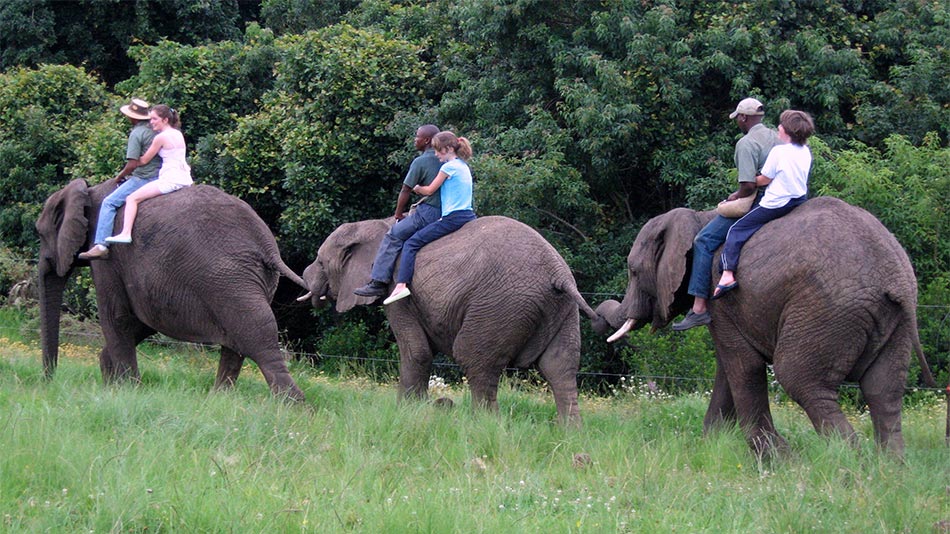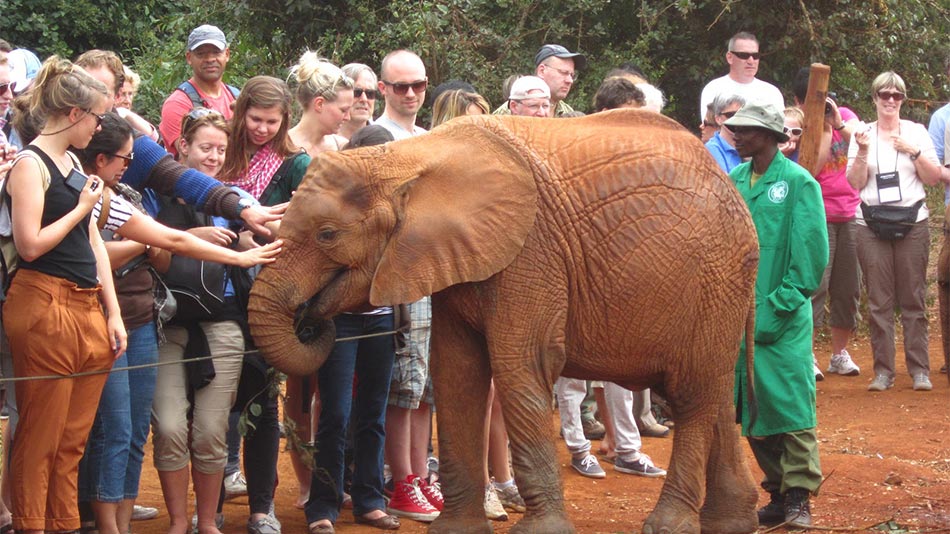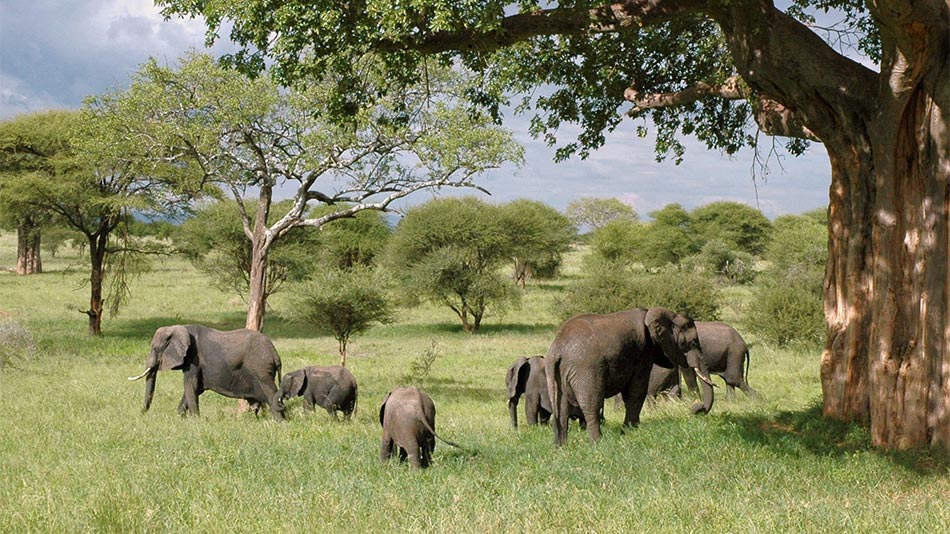Mwaluganje Elephant Sanctuary is located in East Africa, in the Kwale District of Kenya's Coastal Province, and is a mere 45 kilometers southwest of Mombasa. The sanctuary has an area of 36 km², and it, along with the adjacent Shimba Hills National Reserve combine to form the Shimba Hills Ecosystem.

The ecological attractions in Mwaluganje are diverse with scenic beauty such as great natural forest, warm blue Indian Ocean and inspiring cliffs.
Other natural attractions are traditional shrines, Time Rock and Gods Bridge.
Mwaluganje is in an ecosystem characterized by rolling hills, steep ridges, cliffs, and winding water shades. A forested area of approximately 23,736 hectares, comprising of Shimba forest, Mkongani West, Mkongani North, and Mwaluganje forest, also surrounds it.
The Mwaluganje forest is part of the current sanctuary, and the beautiful Mwaluganje Travelers Tented Camp is in the forest reserve. The ecological attractions in Mwaluganje Elephant Sanctuary are diverse with scenic beauty such as the great natural forests, awe-inspiring cliffs, and the warm blue Indian Ocean.
Other natural attractions are "God's Bridge," "Time Rock" and the traditional shrine that characterizes the sacredness of the community.
Mwaluganje Elephant Sanctuary was created in 1993 to conserve the serene surroundings, which house the rare and endangered African elephants, moist deciduous forest, riparian vegetation, and other special attractions available in the ecosystem.
Mwaluganje Elephant Sanctuary Attractions

Elephants Experience: Elephants are the main attraction at Mwaluganje Elephant Sanctuary and there are as many as 150 residing there. Mwaluganje Elephant Sanctuary is a historical bull area where independent elephant bulls grow in preparation for the demanding life of breeding males
Their families live in the neighboring Shimba Hills Reserve and Mwaluganje forest. On occasion, family groups visit males during the mating season or cross the sanctuary as they travel between feeding areas. Once or twice a year, several related elephant families join up and travel as a unit of 200 females and calves (of all ages).
They gather in the Shimba Hills and move into Mwaluganje Elephant Sanctuary during the rainy season (December, and March/April). Such large herds usually last for no longer than three to four days and are consequently a rare and magnificent sight to see. Like human families at a reunion, these gatherings are marked by noisy greetings (i.e. trumpeting).
Botanical Experience: Dinosaur Cycads are fan-like plants that evolved around 300 million years ago, and can be sighted while driving across the Mwaluganje Elephant Sanctuary. They were most plentiful during the Jurassic period (180 million years ago) when dinosaurs roamed the earth.
All six of Kenya's Cycad species (Eucephalartos hildebrantii) are found in Mwaluganje. This species can grow to be 150 years old. Today's cycads are confined to tropical and sub-tropical regions. There are 11 general and approximately 250 species. The second largest is the African family, the Eucephalartos, which consists of 60 species.
Baobab Trees: Mwaluganje Elephant Sanctuary baobab trees (adansonia digitata) are one of Africa's most unusual deciduous trees.
The interior of its trunk (reaching up to 9 meters (30 feet) in diameter) and the lower branches are soft and spongy and can store large quantities of water. Baobabs are specially adapted for long dry seasons. They are leafless during this time of year, thus reducing transpiration or water loss. The baobab is an extremely slow growing tree, reaching up to 18 meters (60 feet) in height.
Truly giant specimens may be several thousand years old. Bats pollinate the flowers of the baobab, and many other animals depend on the unique tree for food and shelter. Look out for them in the Mwaluganje Elephant Sanctuary.
The Scenic Landscape: Mwaluganje Elephant Sanctuary valleys overlooking the Taita Hills are a sight to behold with quite flowing waters and serene surroundings it almost like in paradise. These beautiful hills roll up to Tsavo National Parks to the East and the Indian Ocean to the west and are marked by striking features like the: Golini cliffs, Kitanze Falls, Manolo River, which consists of the Riverine vegetation and Meandering Rivers.
Educational Experience: Mwaluganje Elephant Sanctuary was launched in the early '90s largely to reduce local human/elephant conflicts, which were on the rise due to both more elephants and more people. Elephants would destroy crops and people would retaliate.
More than 200 families have voluntarily contributed land to the reserve, agreeing not to farm this important elephant habitat. Today, they live nearby and manage the sanctuary, earning more from tourism than from farming, a critical factor in ensuring the survival of these elephants. The sanctuary has also enabled the community to build school classrooms and enjoy a steady water supply and better roads.
Elephant Experience:
Elephants are the main attraction at the sanctuary and there are as many as 150 residing there. Mwaluganje is an independent bread area where elephant bulls grow in the preparation for the demanding life in breeding males. Their families live in a neighboring Shimba Hills Reserve and Mwaluganje Forest. On occasion, family groups visit males during mating season or cross the sanctuary as the travel between feeding areas. Twice a year several related elephant families

Join up and travel as a unit of 200 females and calves of all ages
Objective
Protect endangered wildlife between Mwalugaje national park and Shimla, Hills national park. The aim is to find a solution to integrate nature, wildlife and the people
Volunteer Activities
- Monitor threaten spices such as elephant, buffalo, and antelopes
- Tree planting program
- Killing elephant collidors
- Conservation education program
- Lobbying and awareness in the community on wildlife
- Initiating wildlife conservation activities
- Develop the protected areas
Program support
Throughout a volunteer stay in the sanctuary volunteers will have support and guidance of our native wildlife sanctuary project coordinators. They will provide you with competent assistance and help you with anything that you need
Weekend: Opportunity to visit Beach




 We support individuals by; providing placements, assisting with information and travel or other insurance products, hosting pre-departure preparation, supporting individuals and families whilst overseas with us and on their return.
We support individuals by; providing placements, assisting with information and travel or other insurance products, hosting pre-departure preparation, supporting individuals and families whilst overseas with us and on their return. UniversalGiving™ is an award-winning website that helps people give and volunteer with the top-performing projects all over the world. All projects are vetted through UniversalGiving's trademarked, proprietary Quality Model.™ 100% of each donation goes directly to the cause.
UniversalGiving™ is an award-winning website that helps people give and volunteer with the top-performing projects all over the world. All projects are vetted through UniversalGiving's trademarked, proprietary Quality Model.™ 100% of each donation goes directly to the cause.